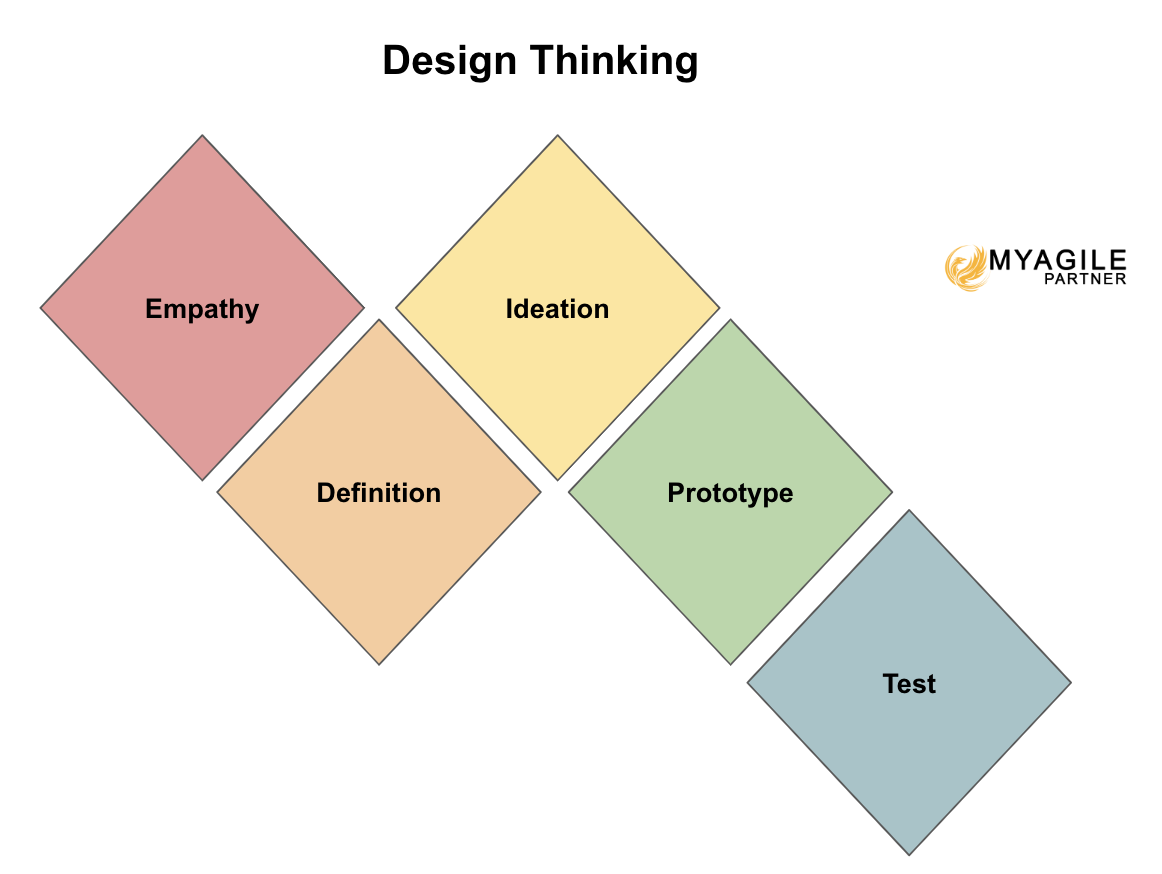
Design Thinking, created by Rolf Faste at Stanford in the 1980s, has emerged as a critical approach within businesses to foster innovation. While agile methodologies increasingly emphasize user-centricity, they didn’t directly address the growing need for innovation. Design Thinking, alongside other methodologies like Lean Startup and Design Sprint, has been integrated into the world of agility to encourage innovation. Over the years, innovation has become a major concern for large corporations, as those who don’t innovate risk their future survival.
Origins of Design Thinking
Understanding the origins of Design Thinking is crucial:
1950s: Although the term “Design Thinking” didn’t appear until 1987, some credit American adman Alex Osborn with its foundational concepts. He encouraged companies to cultivate creative thinking through brainstorming.
1987: Rolf Faste published the first collection, “Design Thinking,” at MIT, marking the first appearance of the term.
1991: David Kelley and Tim Brown founded IDEO, a prominent advocate of Design Thinking. Tim Brown became one of the most famous proponents of this concept, streamlining the methodology from its original seven steps to three key phases.
2014: Tim Brown published the book “Design Thinking,” which significantly popularized this method, taking almost 20 years to gain widespread recognition.
What is Design Thinking?
Design Thinking is an innovative and intuitively driven concept that adheres to a three-step process: Inspiration, Ideation, and Implementation. The framework emphasizes that iteration may require revisiting certain stages for refinement.

Inspiration
During this phase, the team seeks to understand the context and identify the problem they need to solve. They may conduct user interviews to ensure a deep understanding of problems and potential constraints. Like Agile methodologies, Design Thinking is user-centric. Interviewers strive to empathize with users, understanding what they do, think, feel, and say (Do-Think-Feel-Say).
It’s important to note that even after transitioning to the Ideation phase, it’s still possible to return to the Inspiration phase. In the Agile world, flexibility and a willingness to question assumptions are highly valued.
Ideation
In this phase, the team seeks solutions by generating concepts based on the problems identified during the Inspiration phase. Ideation is now synonymous with Design Thinking.
Ideation often involves creating prototypes, often sketched on paper or using appropriate software, which are continuously updated based on feedback. These prototypes are presented to users to seek their input and challenge the team’s ideas.
Ideally, teams should work on Ideation during the framing phase, reducing the likelihood of projects becoming mere “redesigns” that modify visuals without improving the user experience (UX).
Implementation
This phase involves putting the plan into action. It includes:
- Developing an action plan
- Defining roles and responsibilities
- Delivering the solution to the client
The implementation phase also involves learning, which includes:
- Receiving feedback from the end-user
- Determining if the validated solution meets the initial objectives
- Identifying areas for improvement
In Agile, the action plan may involve selecting a methodology (e.g., Scrum), defining necessary resources, and considering logistics. Regular testing with the client is encouraged to anticipate modifications or enhancements. In Agile teams, this is often done during the review, with a dedicated segment for demonstrations.
It’s crucial to understand that in Agile, the goal isn’t to create the perfect prototype; refinement occurs over multiple sprints, in parallel with the elaboration of user stories.
Former Design Thinking Model
An earlier representation of Design Thinking broke the process into five steps, which somewhat resembles a waterfall approach. However, it’s important to emphasize that Design Thinking operates in a more iterative and agile manner.

Conclusion
Design Thinking, a concept that has inspired numerous articles and workshops on this blog, has become increasingly relevant in businesses. Companies now recognize that innovation may be the key to their future survival. Reading books that delve deeper into the subject can provide more comprehensive insights. In recent years, Design Thinking has gained prominence in organizations, as they come to realize that innovation could determine their future survival.

Be the first to comment